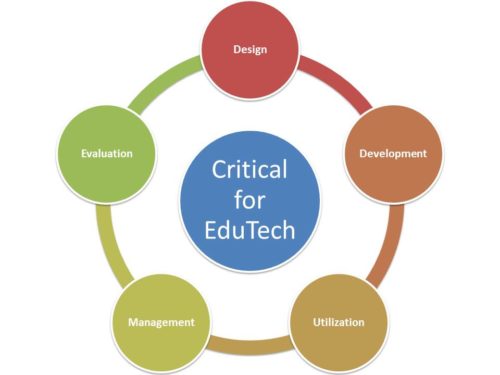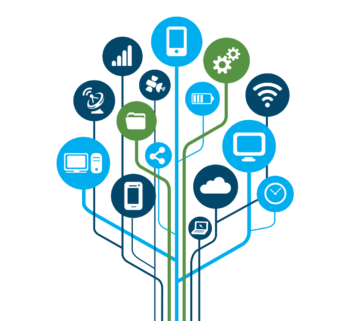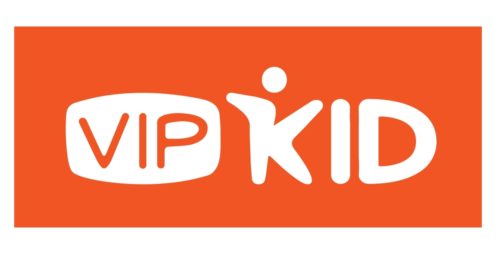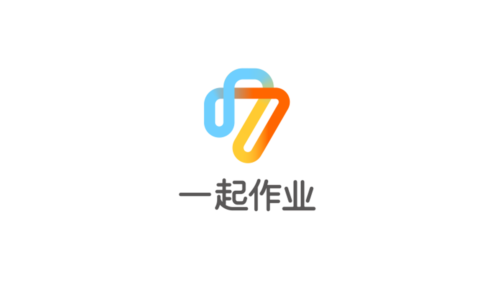Educational technology, also commonly referred to as EduTech or EdTech, is a field which involves design science or a collection of different research interests addressing fundamental issues of learning, teaching and social organization. Educational technology as practice refers to any form of teaching and learning that makes use of technology. Nevertheless, there are a few features on which most researchers and practitioners might agree:
- Use of technology is principled: Technology means the systematic application of scientific knowledge to practical tasks. Therefore, educational technology is based on theoretical knowledge drawn from different disciplines (communication, education, psychology, sociology, philosophy, artificial intelligence, computer science, etc.) plus experiential knowledge drawn from educational practice.
- Educational technology aims to improve education: Technology should facilitate learning processes and increase performance of the educational system(s) as it regards to effectiveness and/or efficiency.
Critical Components of an Educational Technology
“Instructional Technology is the theory and practice of design, development, utilization, management and evaluation of processes and resources for learning.” – Association for Educational Communication and Technology
1. The Theory and Practice - A profession must have a knowledge that supports practice. Theory consists of the concepts, constructs, principles, and propositions that contribute to knowledge. Practice is the application of that knowledge to solve problems. Practice can also contribute to the knowledge base through information gained from experience.
Both theory and practice in Educational Technology make extensive use of models. Procedural models, which describe how to perform a task, help to connect theory and practice. Theory can also generate models that visualize relationships; these models are called conceptual models.

2. Design, Development, Utilization, Management and Evaluation - Design, development, utilization, management and evaluation are the five basic domains of the field. These terms refer to both areas of the knowledge base and to functions performed by professionals in the field. Each domain of Educational Technology includes a body of knowledge based on both research and experience. Each has sufficient uniqueness and scope to have evolved as a separate area of study.
The domain of design represents the largest theoretical contribution of Instructional Technology to the larger field of education. The domain of development is also mature and represents the largest contribution to practice. The other domains are not as well developed or rely heavily on theory and research from other fields.3. Processes and Resources - A process is a series of activities directed towards a particular result. Examples of instructional technology processes include models for the development of instruction, such as instructional systems design; models for teaching, such as the discovery approach; and use of delivery systems, such as teleconferencing;
Resources are sources of support for learning, including support systems and instructional materials and environments. Resources are not only the devices and materials used in the process of teaching and learning, but also people, budget and facilities.
4. For Learning -The purpose of Instructional Technology is to affect and effect learning. Learning is the goal and instruction is a means to learning. Learning, as evidenced by a change in knowledge, skills or attitudes, is the criterion for meaningful instruction.
Technology Design
Design is the process of specifying conditions for learning. The purpose of design is to create strategies and products at the macro level, such as programs and curricula, and at the micro level, such as lessons and modules. The domain of design encompasses at least four major subcategories of theory and practice. These subcategories are described below.
- Instructional Systems Design
 Instructional Systems Design (ISD) is an organized procedure that includes the steps of analyzing, designing, developing, implementing and evaluating instruction. Analyzing is the process of defining what is to be learned; developing is the process of authoring and producing the instructional materials, implementing is actually using the materials and strategies in context, and evaluating is the process of determining the adequacy of the instruction. While ISD may seem to include all the other domains, design emphasizes the parts and the whole of the planning function.
Instructional Systems Design (ISD) is an organized procedure that includes the steps of analyzing, designing, developing, implementing and evaluating instruction. Analyzing is the process of defining what is to be learned; developing is the process of authoring and producing the instructional materials, implementing is actually using the materials and strategies in context, and evaluating is the process of determining the adequacy of the instruction. While ISD may seem to include all the other domains, design emphasizes the parts and the whole of the planning function. - Message Design Messages are patterns of signs or symbols that modify cognitive, affective or psychomotor behavior. Examples are symbols, type faces, visuals, textbook pages, and web pages. Message design must be specific to both the medium (e.g., photograph, computer graphic, billboard) and the learning task (attitude formation, motor skill development, memorization). This subcategory emphasizes the planning of a message to fit the medium and the learning task.
- Instructional Strategies Instructional strategies are specifications for selecting and sequencing events and activities within a lesson. A designer uses instructional strategy theories as principles for instruction, and chooses them based on the learning situation, learning environment, learning task and learner. Again, the focus is on the choice and planning of a strategy to fit the situation.
- Learner Characteristics Each learner has past experiences or even innate qualities that impact the effectiveness of a learning process. A designer uses theory and research about learner characteristics to plan for modifications in instruction to support increased effectiveness for that learner or one like him/her.
Development
Development is the process of translating the design specifications into physical form. It includes hardware, software, visual and auditory materials, as well as the programs or packages which integrate the various parts. The sub-categories of the development domain reflect chronological changes in technology, with new overlapping but not replacing old.
 Print Technologies - Print and visual materials, including books, photographs and graphics involve the most basic ways of producing and delivering instructional materials. They also provide the foundation for both the development and utilization of other instructional technologies. Text displayed by a computer is an example of the use of computer-based technology for production. When that text is printed in hard copy to be used for instruction, it is an example of delivery in a print technology. Development of text materials and visual materials relies upon theories related to visual perception, reading and human information processing as well as theories of learning.
Print Technologies - Print and visual materials, including books, photographs and graphics involve the most basic ways of producing and delivering instructional materials. They also provide the foundation for both the development and utilization of other instructional technologies. Text displayed by a computer is an example of the use of computer-based technology for production. When that text is printed in hard copy to be used for instruction, it is an example of delivery in a print technology. Development of text materials and visual materials relies upon theories related to visual perception, reading and human information processing as well as theories of learning.- Audiovisual Technologies - Audiovisual instruction is most obviously characterized by the use of hardware in the teaching process, that is, using mechanical or electronic machines to present auditory and visual messages. There is an increasing overlap of AV Technologies with Computer-based Technologies. For example, a video is an audiovisual technology. However, when video information is available on a videodisc, it becomes randomly accessible and may demonstrate most of the characteristics of computer-based or integrated technologies.
- Computer-based Technologies - Computer-based technologies use screen displays to present information to students. Information is stored electronically in the form of digital data rather than as print or visuals. The various types of computer applications are generally computer-based (CBI), computer-assisted (CAI), or computer-managed (CMI).
- Integrated Technologies - Integrated technologies are ways to produce and deliver materials which encompass several forms of media under the control of a computer. An example of an integrated system would be a computer which has a hypermedia lesson running under an authoring system such as HyperCard or Toolbook. This lesson would include information on a videodisc, audio system or the WWW. As controlled by the learner’s interaction with the computer keyboard and monitor, the computer would access these various resources and deliver the output to the computer screen. The learner doesn’t have to be concerned about the delivery of the resources, but can concentrate on the content of the lesson.
Utilization
 This is the oldest of the domains because regular use of AV materials predates even concern for production of instructional media. Utilization is the act of using processes and resources for learning. Bringing about change, through instructional innovation is incorporated within this domain. Those engaged in utilization are responsible for matching learners with specific materials and activities, preparing learners for interacting with the selected materials and activities, providing guidance during interaction, providing for assessment of the results, and incorporating this usage into the continuing procedures of the organization. The subcategories of this domain explain these activities further.
This is the oldest of the domains because regular use of AV materials predates even concern for production of instructional media. Utilization is the act of using processes and resources for learning. Bringing about change, through instructional innovation is incorporated within this domain. Those engaged in utilization are responsible for matching learners with specific materials and activities, preparing learners for interacting with the selected materials and activities, providing guidance during interaction, providing for assessment of the results, and incorporating this usage into the continuing procedures of the organization. The subcategories of this domain explain these activities further.
- Media Utilization - The media utilization process is a decision-making process based on instructional design specifications. Those engaged in media utilization are taking what was planned by the instructional design process and carrying it out with learners in the classroom. For example, how a film is introduced to learners or "followed-up" with activities would be tailored to the type of learning desired. Learner characteristics and learning styles may also influence how media is utilized.
- Diffusion of Innovation - The goal in this area of utilization is to bring about change . The first stage of the change process is to create awareness through dissemination of information. From this awareness comes interest, trial and adoption.
- Implementation and Institutionalization - The goal in this area of utilization is to continue the change process. Instructional technologists implement the use of instructional materials or strategies in real (not simulated) settings. They also institutionalize, that is establish continuing, routine use of the instructional innovation in the structure and culture of the organization. Both processes depend on changes in individuals and changes in the organization. Implementation does, however, concentrate on the proper use of the innovation by individuals. Institutionalization serves to integrate the innovation in the structure and life of the organization.
- Policies and Regulations - Generating, refining, interpreting and disseminating rules which affect the use and diffusion of instructional technology is also a part of the utilization domain. Some rules, like laws, come from outside the field and must be applied within the field. Some rules, like ethical standards, are formulated within the field and communicated to those within the field. Instructional technology has been involved in policy generation related to instructional television, copyright law, and standards for equipment and programs.
Management
Instructional technologists are often called upon to manage. Programs, projects and settings may differ greatly, but the basic skills necessary to manage remain constant. These skills include planning and organizing programs, supervising personnel, planning and administering budget and facilities, coordinating policies and procedures, and providing leadership. Four subcategories of management are especially important in instructional technology.
- Project Management - Project managers plan, monitor and control instructional design and development projects. Their jobs are limited to ensuring the success of a particular project, but they are generally responsible for managing all aspects of the project.
- Resource Management - Resources can include personnel, budget, supplies, time, facilities, and instructional resources. An example of a manager in this area would be the Director of Media Resources at a university. He would, through management, make instructional resources accessible to those who need them.
- Delivery System Management - Distance learning projects, such as GSAMS, provide requirements for this type of management. Delivery system management focuses on product issues, such as hardware/software requirements and technical support to users and operators, and process issues, such as guidelines for designers and instructors.
- Information Management - Information must be accessible to users when, where and in whatever format best serves their needs. Information managers plan, monitor and control the storage, transfer or processing of information in order to provide resources for learning.
Evaluation
 Within this domain, evaluation is the process of determining the merit, worth or value of an instructional program, project or product for the purpose of making a judgment. The focus is on the instructional program, project or product (material) not on the learners. Personnel evaluation may play into the evaluation of an instructional program or project, but is also not the focus within this domain. Three
subcategories of evaluation are of particular interest for study and practice within instructional technology.
Within this domain, evaluation is the process of determining the merit, worth or value of an instructional program, project or product for the purpose of making a judgment. The focus is on the instructional program, project or product (material) not on the learners. Personnel evaluation may play into the evaluation of an instructional program or project, but is also not the focus within this domain. Three
subcategories of evaluation are of particular interest for study and practice within instructional technology.
- Problem Analysis - Evaluation starts as the program, project or product is being planned. The first step in evaluation is problem analysis. This process includes identifying needs, determining to what extent the problem can be classified as instructional in nature, identifying constraints, resources and learner characteristics, and determining goals and priorities (Seels and Glasgow, 1990). A need has been defined as "a gap between ‘what is’ and ‘what should be’ in terms of results" (Kaufman, 1972).
- Criterion-Referenced Measurement - Because of the emphasis on achievement of specific competencies within the field of instructional technology, criterion-referenced measurement is of interest. The criterion for determining adequacy is the extent to which a learner (or a program, project or product) has met the objective.
- Formative and Summative Evaluation - An emphasis on both formative evaluation (in the early stages of product development) and summative evaluation (after completion of instructional program) is a prime concern of instructional technologists. Formative evaluation involves gathering information on adequacy and using this information as a basis for further development. Summative evaluation involves gathering information on adequacy and using this information to make decisions about implementation or institutionalization.
FUTURE OF EDUCATIONAL TECHNOLOGY

https://soeonline.american.edu/blog/the-future-of-education-technology







 Instructional Systems Design (ISD) is an organized procedure that includes the steps of analyzing, designing, developing, implementing and evaluating instruction. Analyzing is the process of defining what is to be learned; developing is the process of authoring and producing the instructional materials, implementing is actually using the materials and strategies in context, and evaluating is the process of
Instructional Systems Design (ISD) is an organized procedure that includes the steps of analyzing, designing, developing, implementing and evaluating instruction. Analyzing is the process of defining what is to be learned; developing is the process of authoring and producing the instructional materials, implementing is actually using the materials and strategies in context, and evaluating is the process of  Print Technologies -
Print Technologies - 











Leave a Reply